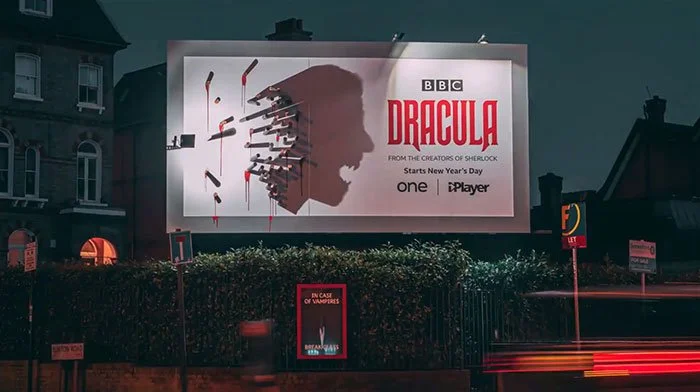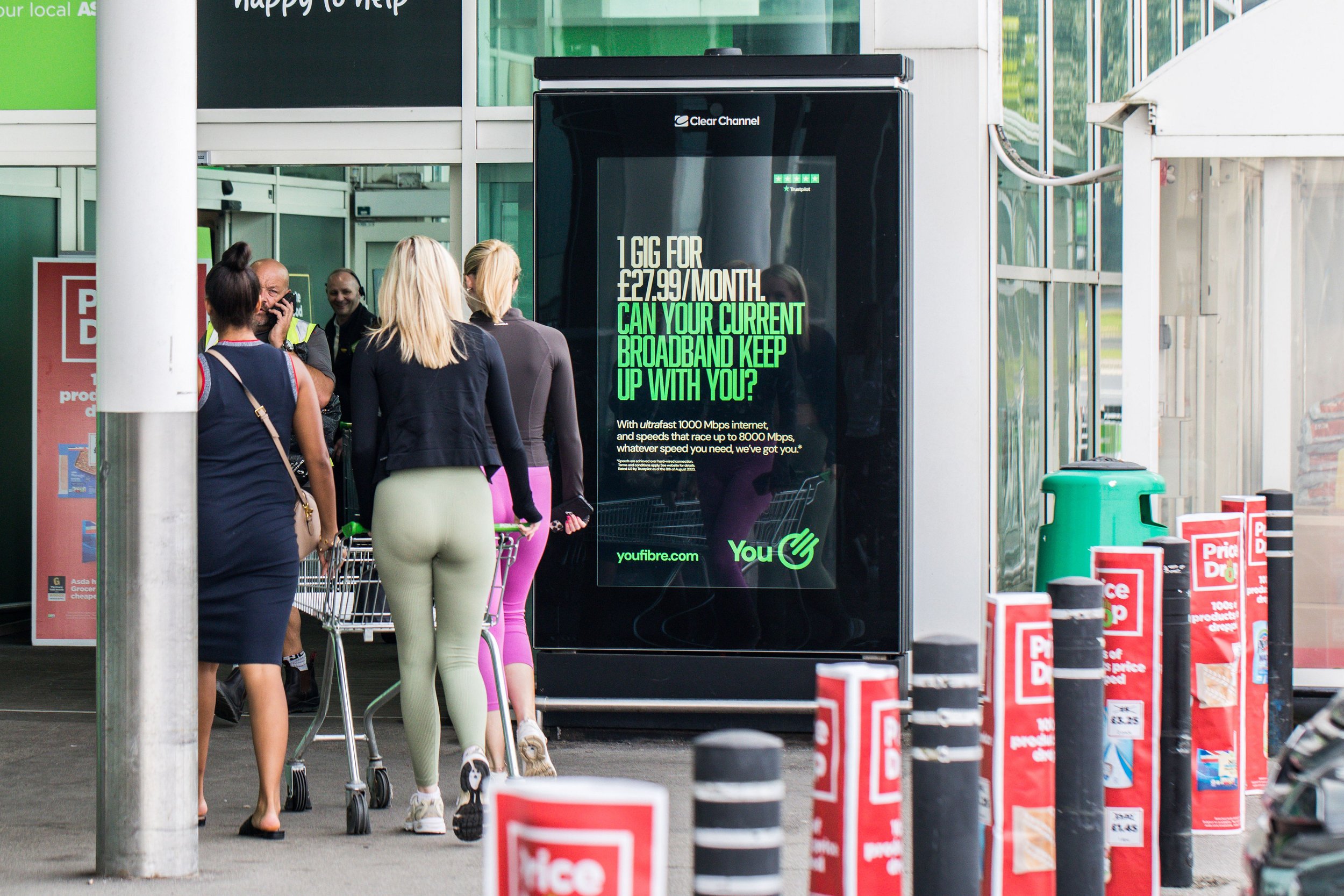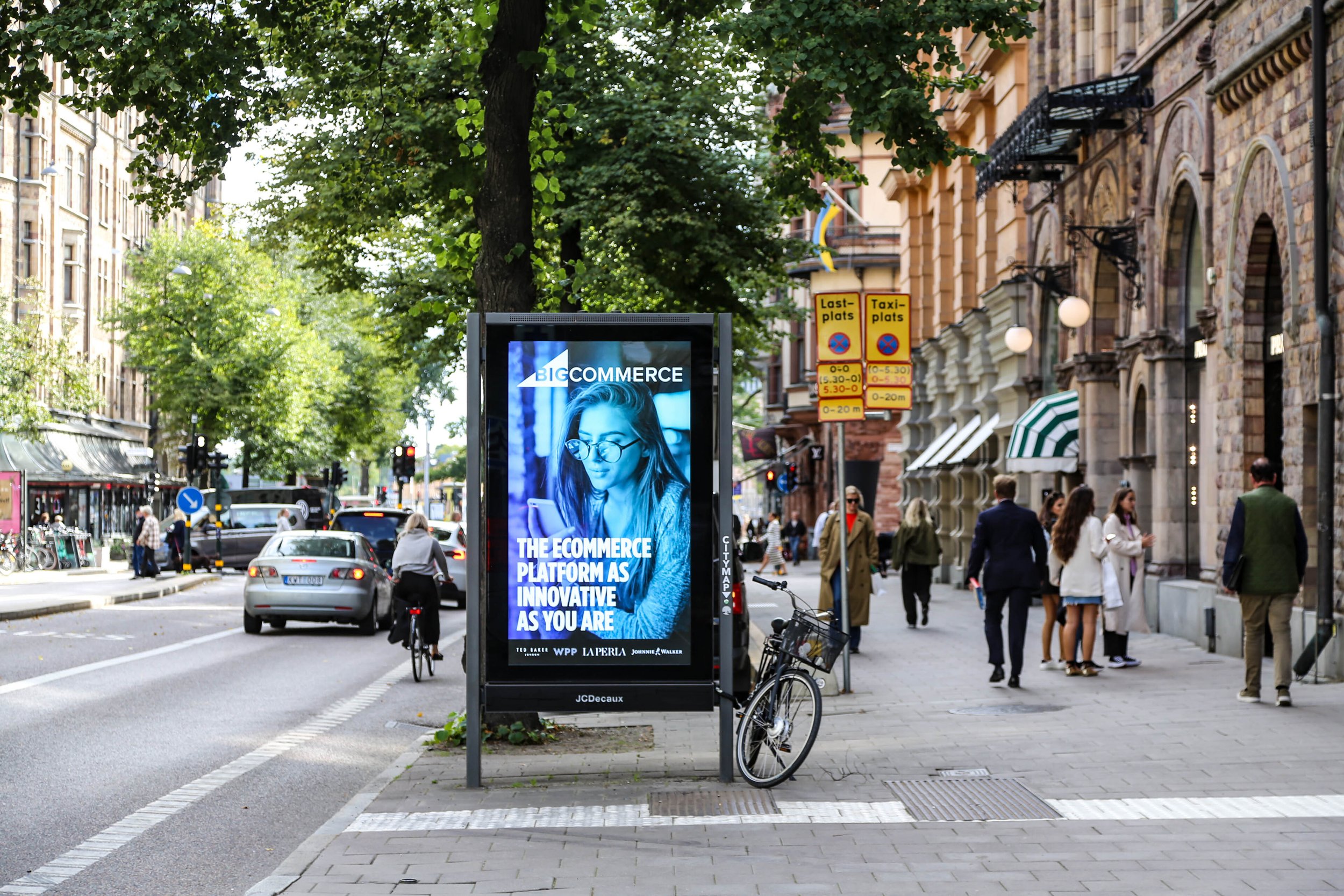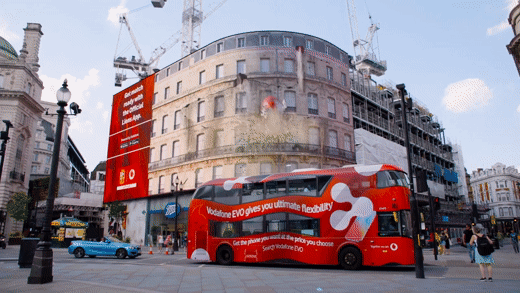How do 3D billboards work?
As the needs and desires of consumers evolve, so too must the advertising industry and one way billboard advertising has been leading the way on this, is with 3D digital billboards.
Imagine you’ve just got off the tube in the City of London, excited for a full day of sightseeing and a spot of shopping. As you walk down Regents Street towards Piccadilly Circus, you’re met with the image of a giant pair of sports shoes flying towards you… Only they’re not real and it’s just a giant LED screen using forced perspective.
Welcome to the wonderful world of 3D digital billboards.
In this article, we take a look at how 3D digital billboards work and explore their role in the future of billboard advertising.
What are the types of 3D billboards?
3D Static Billboards
3D billboards are static billboards that use materials such as plastic, foam, metal or wood to create a three-dimensional effect. A study found that 3D posters are effective forms of advertising since they attain greater attention, higher ad recalls and increased brand name and brand package recognition in comparison to 2D posters. (1)
3D Static Billboard Build
3D Digital Billboards
3D billboards, also known as anamorphic billboards are a form of digital out-of-home advertising (DOOH) that uses motion pictures and clever 3D design to create an immersive three-dimensional experience available to the naked eye. It combines traditional billboard advertising with 3D digital technology.
To conventionally experience 3D digital images, you would need to wear special glasses that layer multiple images to create a three-dimensional effect. However, 3D digital billboards use design elements such as forced perspective to deliver a similar multi-sensory experience and create the optical illusion that something is popping out of the billboard.
Forced Perspective
To understand how forced perspective works, it’s important to consider how our brains perceive the 3D world.
One primary mechanism for perceiving depth is something called binocular disparity. This visual phenomenon is a result of our eyes being spaced slightly apart and each eye perceiving an object from a slightly different angle. The brain combines these two images to create a sense of depth and distance.
In addition to binocular disparity, the brain uses other cues to perceive depth such as: the degree of inward rotation of the eye (convergence), texture gradients, size, and shading. The brain combines all of these cues to develop a perception of the 3D world.
Forced perspective capitalises on visual cues to create an optical illusion. This technique aims to force a specific visual cue onto the perceiver’s brain, whether that’s making objects appear larger or smaller. This is achieved by adjusting the angle, distance and size of objects in a scene as well as considering the placement of the camera or observer.
How do 3D Digital Billboards work?
The 3D digital billboard is typically made of a 2D LED or OLED screen using two versions of the same image shot from different angles in a single display clip. These two images are then superimposed so that the observer’s left and right eye see the image from two different points of view simultaneously. The brain translates this information to create a three-dimensional effect. The 3D design can be placed/played on any LED or video-capable screen. Flat, curved or cornered.
Interested in advertising on a 3D Billboard. Read more about our 3D Billboard advertising services here.
Innovative 3D design, optimisation of the vantage point (the position of observation) as well as layering images are all techniques used to create an ultra-realistic effect that is engaging and memorable. The 3D digital billboard itself also has a number of key features that help to attract the viewers’ attention and make them stand out amongst other advertisement formats.
High Resolution: A high-resolution 3D screen allows for more depth and realism making the content more captivating. The screens are typically 4k, which is pretty much like watching the latest high-definition TV.
Realism: 3D billboards use animations as well as depth to create content that’s immersive and realistic. With the assistance of 16-bit high grayscale grading, 3D billboards can show sharp colours, adding to the ultra-realistic nature of these billboards.
Creative Flexibility: Unlike traditional billboards, 3D digital billboards have greater design capabilities meaning brands can experiment with creativity and further blur the lines between reality and fantasy.
Adaptive brightness: 3D digital billboards are manufactured to be optimal in all weather conditions. They auto-regulate brightness to adapt to nighttime and daytime viewing making them efficient for 24/7 visibility.
Are 3D Digital Billboards effective?
3D digital billboards offer a new level of engagement and interactivity. In fact, they are so spine-tingling that you may even want to reach out to try to touch them.
The success of 3D digital billboards can be attributed to their immense depth and realism.
Humans seek out novel experiences and the ones that 3D digital billboards deliver can be enough to influence mood and sentiment, driving consumer engagement, viewing time and brand affinity.
The role of an advertisement is to encourage consumers to invest in your brand and one way to do this is by tugging on people’s emotions. 3D digital billboards provide an opportunity for rich narrative depth where you can leverage design and take the time to build a story that connects with the observer. They convey complex messages as well as tingle the senses, leaving a lasting impression that elevates your brand.
Furthermore, the digital format allows for flexibility, so if you need to update or modify advertisements in real time, you are able to do so in a timely manner, ensuring your brand stays relevant.
Examples of 3D Digital Billboard adverts
Netflix ‘Resident Evil’ series advertisement in New York City, USA.
For the promotion of Netflix’s Resident Evil series, the online streaming platform used a 3D digital billboard to create an ultra-realistic advert of characters and objects featured in the show, emerging out of the billboard.
Nike Japan’s Air Max Day 3D advertisement in Tokyo, Japan.
To celebrate Nike Air Max Day, Nike used a 3D digital billboard located outside Shinjuku Station in Tokyo where different versions of the Air Max shoe is redesigned and unveiled to observers, appearing to float in the air.
Meta Quest 2 advertisement in London, United Kingdom
Meta Quest took over the giant screen of Piccadilly Circus in London for their 2022 holiday ‘Wish for the Extraordinary’ campaign. The creative takes the observer through a range of exciting situations including a captivating moment where an astronaut appears to be reaching out to touch you.
The Future of 3D digital billboards
In today’s saturated media landscape, advertisers need to stand out. One way to do this is by using innovative ways to grab attention and 3D digital billboards are effective tools that do just that. We are likely to see continued growth of the 3D digital billboard medium as technology develops and market trends change.
Environmentally friendly
3D digital billboards are more sustainable than traditional static billboards. This is because static billboards require production, transportation and printing of new materials which can contribute to environmental impact.
Continued emphasis on sustainability may encourage the industry to explore more energy-efficient digital displays and materials. As companies and advertisers increasingly recognise the importance of sustainable practices, they may look to more environmentally friendly advertising methods such as 3D digital billboards to cut costs and enhance brand reputation.
Enhanced Utility
We may see 3D digital billboards increasingly play a role in everyday life to enhance the overall efficiency of towns and cities. From displaying real-time information such as weather alerts, public transportation updates and emergency notifications, to being used for public service announcements and community engagement.
Cost-Effective
Remote management of 3D digital billboards means that advertisers can make real-time adjustments without the operational costs of physical maintenance. Static billboards may need frequent maintenance due to wear and tear, whereas digital billboards are built with durable materials that have a longer lifespan, reducing the frequency of replacements. These cost-efficient features paired with the design capabilities of 3D mean that companies and advertisers may increasingly opt for digital over static.
Data-Analytics
Data can inform advertisers on behaviour, demographics, preferences and interactions allowing advertisers to create a more personalised experience. 3D digital billboards could collect data from sensors and cameras, providing advertisers with valuable insights into observer engagement and emotional response. This data helps advertisers to optimise campaigns and enhance return on investment.
Interactivity
Some 3D billboards incorporate interactive elements, such as gesture recognition. In future, we could see more interactive elements to include facial and voice recognition further blurring the lines between reality and augmented reality. This allows observers to interact further with the billboard and provides advertisers with more valuable data.
Conclusion
3D digital billboard advertising has transformed the advertising space, providing a sense of narrative depth, realism and interactivity that transcends traditional advertising. Forced perspective allows for a more engaging and immersive experience that captivates the observer, leaving them with a memorable impression. Using the latest technology, 3D digital billboards can ensure optimum visibility at all times as well as sustainability by limiting the need for physical materials. As we navigate the future of all billboard advertising, we will see 3D billboards lead the way by seamlessly integrating technological developments, creativity and sustainability.
One Day Agency is an independent integrated agency. We create 3D billboards and media planning and buying for brands of any budget.
With over 10 years of 3D modelling experience with brands of all sizes and end-to-end creative control through our in-house 3D creative team, you can be sure that we’ll exceed expectations and create memorable impressions for your brand. Contact us today to get started.
FAQs
How do the 3D billboards work?
3D static billboards typically use materials such as plastic, foam, metal or wood to create a three-dimensional effect. 3D digital billboards take two images shot at different angles and superimpose them together to create an optical illusion that a character or object is popping out of the billboard.
How effective are digital billboards?
A Nielson report wrote that 65% of people who saw a digital billboard engaged in at least one action, such as visiting a website or storefront. (source) Nielsen's research also indicated that between 74% and 89% of travellers could remember at least one digital billboard advertisement. Notably, industries such as entertainment, leisure, fast-food restaurants, televised sporting events, and gaming demonstrated exceptional performance, positioning digital billboards as effective tools for advertising in these sectors.
How does a digital billboard work?
The technology used in digital billboards is simple. There are a set of light-emitting diodes within the billboard that come together to create an image, similar to what we see on LED displays or TVs. The result is a mesmerising and attention-grabbing display.
References
If you want to learn more about 3D Digital Billboard, reach out to us today.











